How to care for fuchsias in a hanging basket – pro tips on watering, location, and more
Fuchsias are great for planting up high, but there are a few things to consider to keep them looking their best

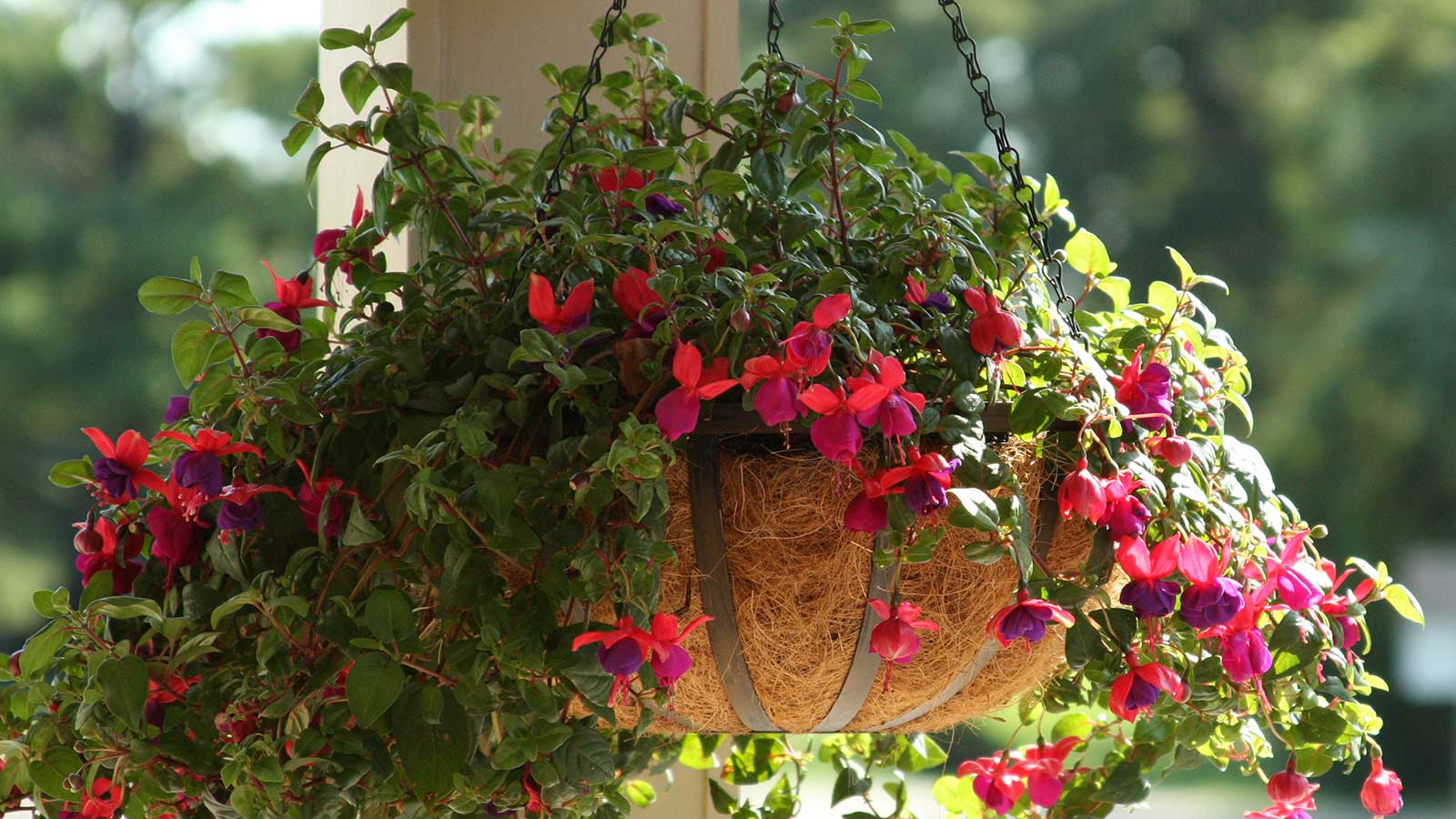
Q: I want to plant some fuchsias in hanging baskets to brighten up my porch. Are there any special considerations I need to bear in mind to help them thrive?
A: With their ballerina-like blooms in a spectrum of reds, purples, pinks, and whites, fuchsias are easily one of the best plants for hanging baskets. But, to ensure your display stays gorgeous throughout summer, you'll need to factor a few things into their maintenance routine.
To get the lowdown, we chatted with plant-care experts. Below, they share their top tips for caring for these flowering shrubs up high, as well as their recommended varieties.
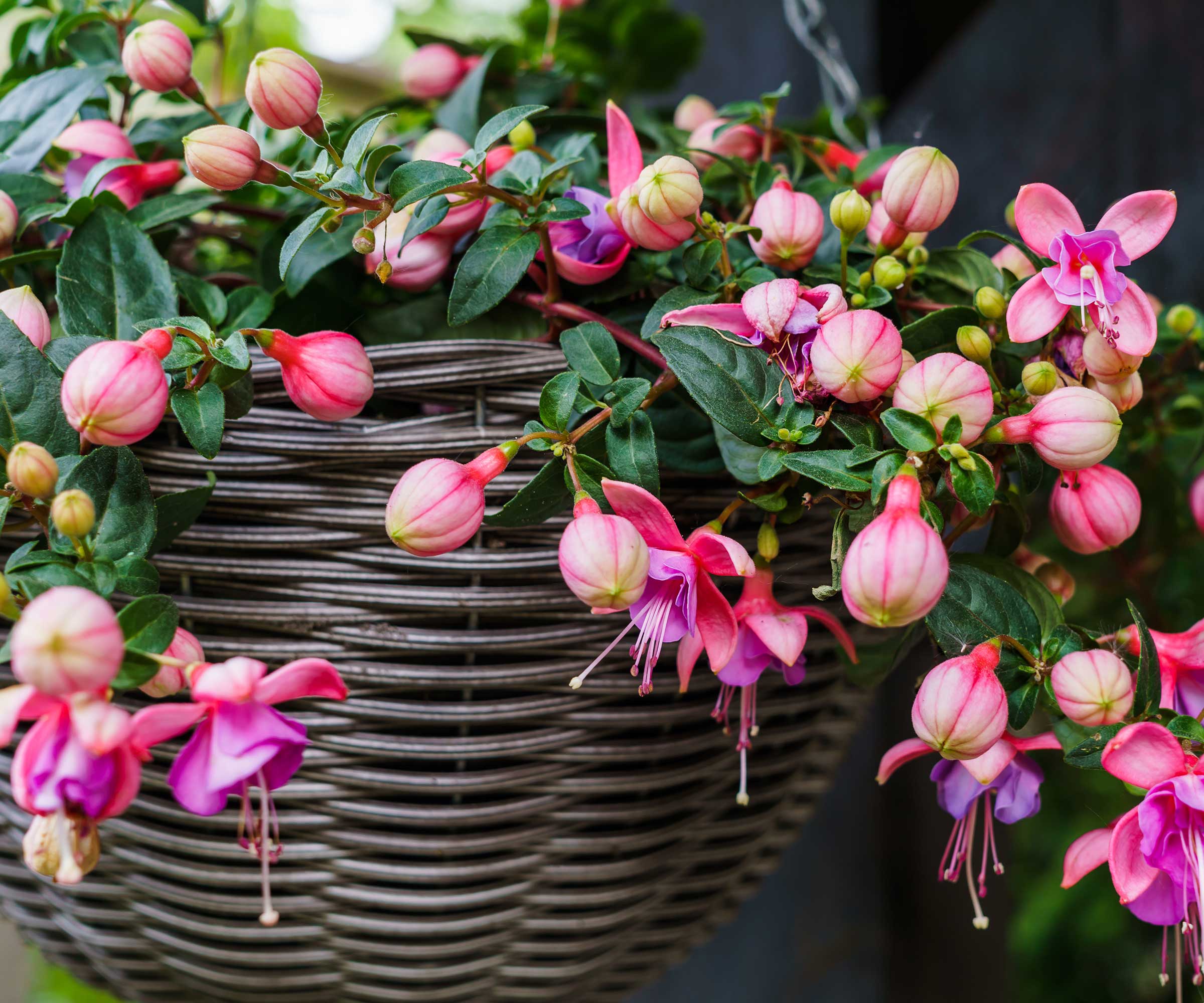
Fuchsias delight with their distinct summer blooms
3 tips on caring for fuchsias in hanging baskets
Before you get to the maintenance part, it's essential to ensure the planting stage of your hanging basket is done properly.
Fill your basket with a high-quality, well-draining potting mix, as Kiersten Rankel, an expert from plant-care app Greg, advises. 'Fuchsias love a soil that's rich in organic matter, so don't be afraid to mix in some compost,' she adds. 'Plant your fuchsia deep enough to cover the root ball, and give it a good drink of water to help it settle in.'
Top tip: If you need to line your planter to prevent soil from falling out, consider these coconut fiber liners from Amazon. They come in various sizes and can help retain moisture.

Kiersten Rankel is a certified Louisiana Master Naturalist and regularly volunteers with local community gardens and nonprofits to help restore critical ecosystems along the Gulf Coast. She earned her master's degree from Tulane University in Ecology and Evolutionary Biology after her undergraduate degree in Environmental Biology, also from Tulane. In her spare time, she enjoys hiking and tending to her 150+ houseplants and vegetable garden.
1. Water often
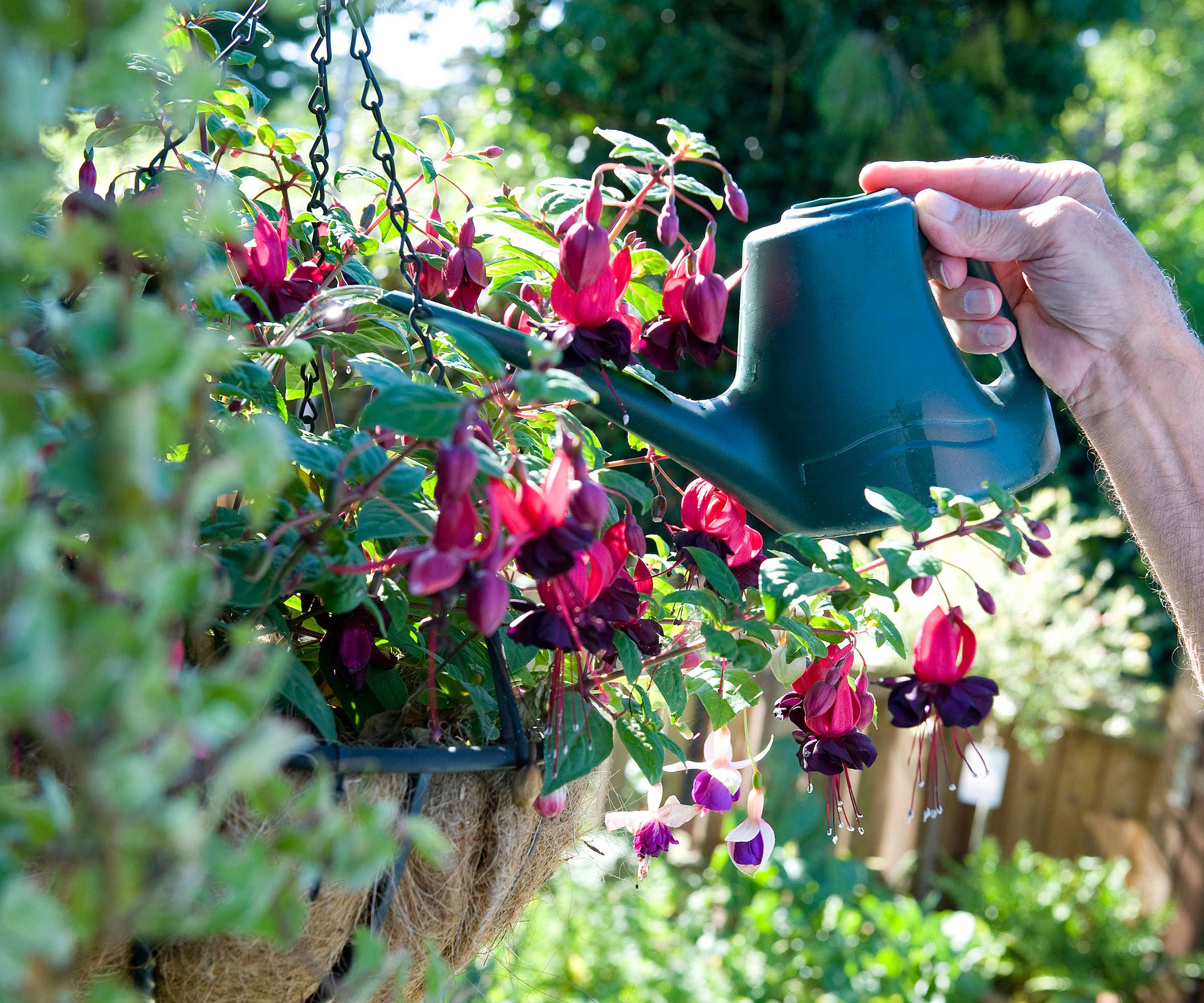
Hanging baskets are prone to drying out
Jessica Mercer of Plant Addicts says, 'Fuchsias planted in hanging baskets can dry out quickly because of the limited volume of soil and exposure to drying winds.' These plants will stop blooming if the soil dries out too much, she warns.
Design expertise in your inbox – from inspiring decorating ideas and beautiful celebrity homes to practical gardening advice and shopping round-ups.
Kiersten says, 'During the height of summer, you may need to water your basket daily, especially if it's in a sunny spot. A good rule of thumb is to check the soil with your finger – if the top inch feels dry, it's time to give your fuchsia a drink.'
This watering wand from Green Mount at Amazon makes watering hanging baskets an easier task.
Fuchsias are also heavy feeders and require regular fertilizer applications, as Jessica points out. This will allow them to continue growing and blooming all season. You can use compost tea or comfrey tea for a high-quality organic option, she adds.

Jessica Mercer, PhD, is the senior content marketing coordinator for Plant Addicts. As a 'plant collector', Jessica enjoys growing many different plants and learning about the best culture practices for each. Writing for Plant Addicts is a real joy for her, as she can use her science background to research interesting plant topics.
2. Be wary of direct sunshine
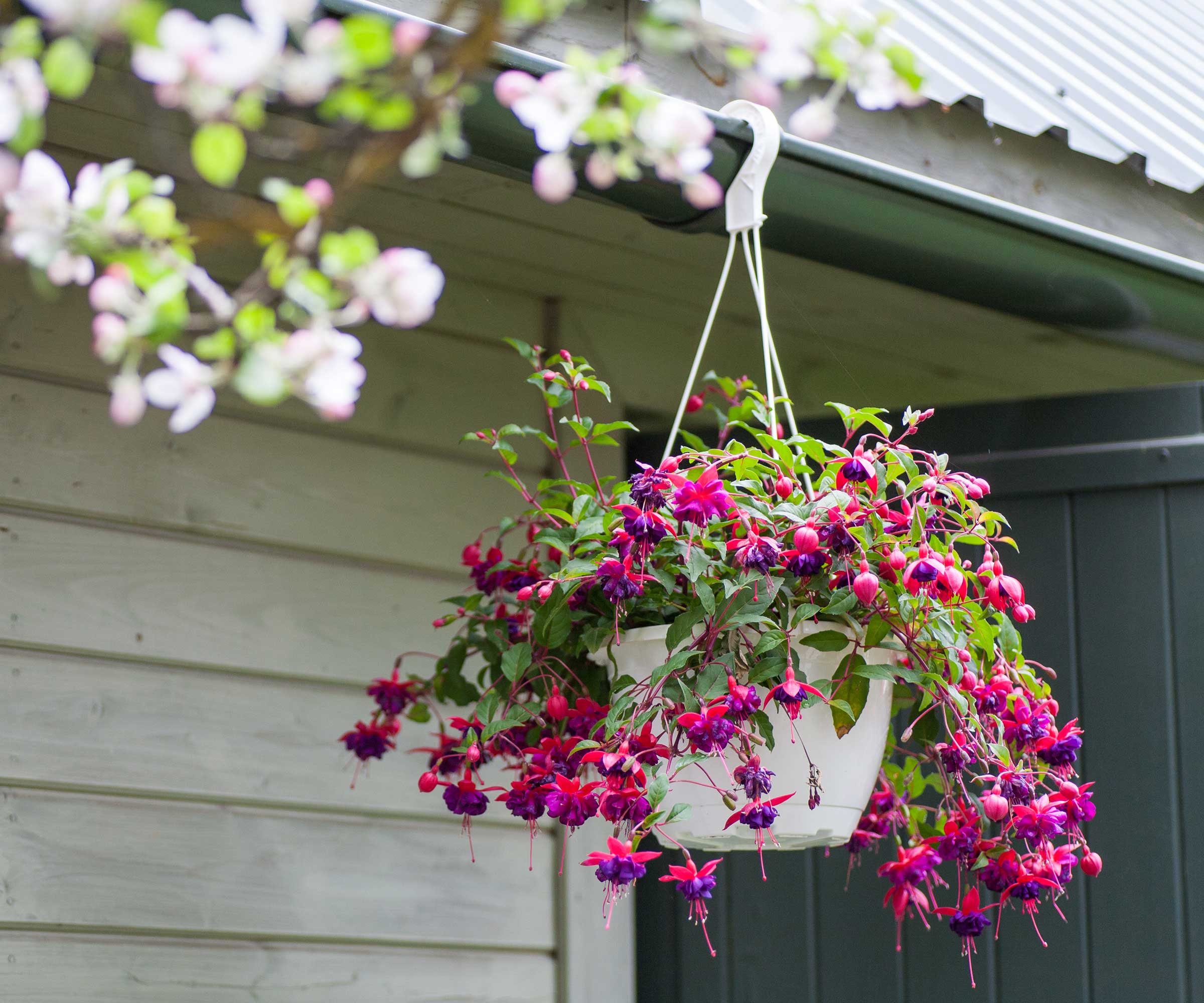
Tender varieties need protection from hot sun
Jessica says hardy fuchsias grow best in full sun, but the tender, trailing types (which are better suited to hanging baskets) prefer a little more protection. For the latter, hang the basket in a spot that receives morning or late-day sun, she advises. 'If the foliage shows signs of scorching, move the basket into more shade.'
On the other hand, weak and spindly growth can be a result of too little light, Kiersten points out. Keep an eye out and adjust the location accordingly if needed.
Avoid placing them in windy locations, too, highlights Autumn Janus of Perfect Plants Nursery. Otherwise, the delicate blooms can be damaged, she warns.

Autumn is a horticulture specialist and marketing professional at Perfect Plants Nursery. With four years of experience in the horticulture industry, she has developed a passion for helping people create beautiful indoor and outdoor spaces to enjoy. Her expertise in horticulture encompasses a broad range of activities, including plant care and selection, landscape design, and maintenance.
3. Deadhead and prune
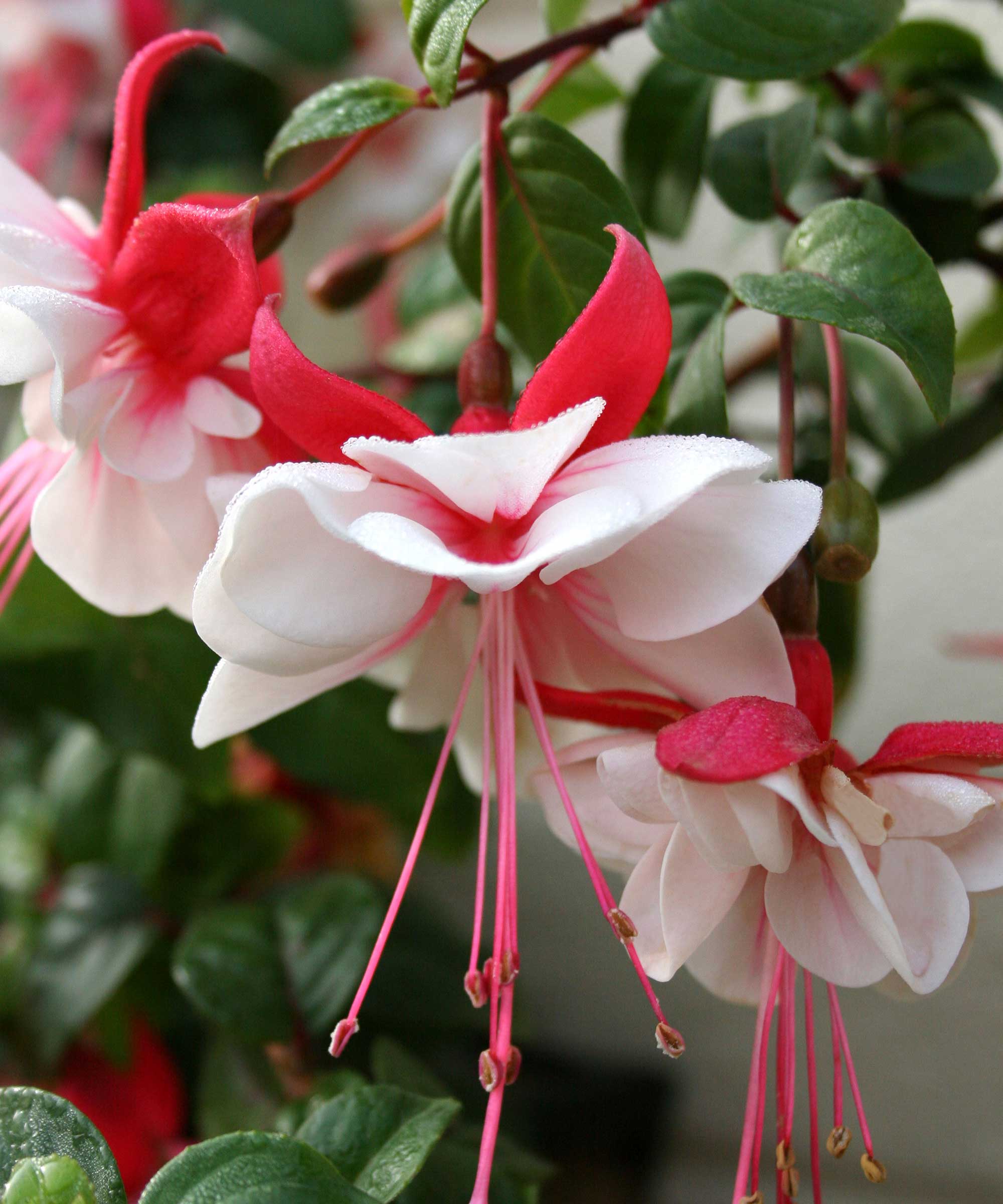
'Swingtime' is a trailing variety with a striking appearance
Jessica recommends deadheading the blooms, which can prolong the flowering season. Kiersten agrees: 'Simply pinch off any spent flowers, making sure to remove the entire flower stalk. This encourages your plant to put its energy into producing more blooms, rather than seeds.'
'Leggy plants can be encouraged to grow bushier by pinching the growth tips,' Jessica adds.
Top tip: While removing spent flowers can be beneficial for many summer-blooming plants, it's worth familiarizing yourself with the common deadheading mistakes for the best results.
FAQs
Do you need to repot fuchsias in hanging baskets?
You may need to repot your hanging fuchsia later in the season. Jessica Mercer of Plant Addicts explains: 'Fuchsia plants are vigorous growers and can fill a hanging basket by mid-summer. Some nurseries sell three to five plants in one basket, so conditions can become quite crowded.'
If you notice water running through the pot quickly, your plant may be rootbound and in need of a larger basket, she says. 'Select a hanging basket or container that is a few inches larger, and repot the plant. Make sure to loosen the roots of a rootbound plant before repotting.'
What are some good varieties of fuchsias for hanging baskets?
Many fuchsia varieties are trailing plants perfect for hanging baskets. Kiersten Rankel, an expert from plant-care app Greg, says you can't go wrong with 'Swingtime' which has red and white blooms.
For spectacular foliage, try the 'Autumnale' fuchsia, suggested by Jessica Mercer of Plant Addicts. Its chartreuse leaves change to purple and coppery orange by midsummer, she says, while the classic red blooms appear from early summer to fall.
Gardening expert Rebecca Sears recommends the 'Bella Maria' fuchsia variety, available from Ferry-Morse. It's renowned for its elegant, pendulous blooms that showcase a delightful blend of rosy and purple hues, she says.
If you want to attract hummingbirds to your yard, consider 'Gartenmeister Bonstedt'. It has vibrant orange tubular flowers and dark foliage. Despite its more upright form, it still looks gorgeous planted up high.

As CMO and resident green thumb for the Green Garden family of brands, Rebecca Sears nurtures the company's heritage but also looks to develop new products and solutions to help gardeners of all skill levels fuel their passion and become more successful in the garden. Rebecca has been gardening from coast to coast, first realizing her passion while living in Portland, Oregon, inspired by the public gardens throughout the city. When she relocated to the northeast, she built upon her knowledge and craft, and now her backyard garden grows larger each year.
One more tip to consider is learning how to fertilize fuchsias. You can either incorporate slow-release feed in the soil when potting up your plants or feed with a water-soluble fertilizer every 2 weeks during the growing season.
Looking for more ways to keep your hanging baskets looking tip-top? Our guide on how to keep petunias blooming may also come in handy.

Holly started writing about gardening five years ago, and she is a regular contributor to Homes & Gardens. She has also written many gardening features for Woman & Home and Real Homes, too. She has previous experience as a professional gardener, where she helped to plant and maintain private gardens. Holly has also looked after allotment plots over the years and loves to grow her own flowers and veggies from seed. In her spare time, she enjoys visiting local gardens, botanical drawing, and tending to her ever-growing collection of houseplants.